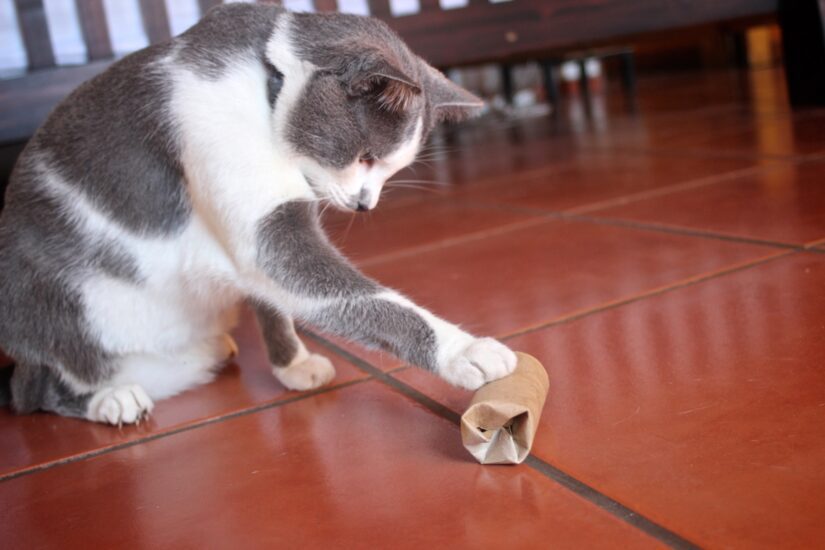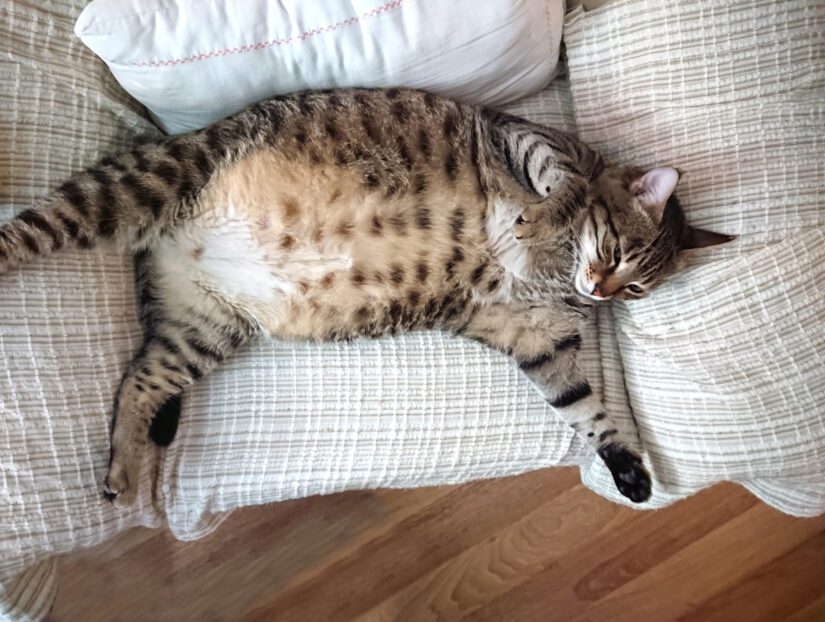It’s no secret that pets love treats and many are happy to lounge around at home. A chonky cat or dog may look cute, but when pets start to pack on the pounds, it’s cause for concern.
Veterinarians are seeing an increasing number of overweight or obese pets. The Association for Pet Obesity estimates that 61 per cent of cats and 59 per cent of dogs in the U.S. were classified as overweight or obese in 2022. A 2019 University of Guelph study of about 19 million cats revealed that felines are heavier now than they were in the 1990s.
Take Tuva, who arrived at the Kamloops & District SPCA weighing 28 pounds. Staff worked with a veterinarian to place Tuva on a weight loss plan that included exercise with lots of catnip.
Think of the pet’s health
Obese or overweight pets are at a greater risk of developing health problems, which can cost thousands of dollars in vet bills to treat. Obesity in dogs and cats is associated with high blood pressure, type 2 diabetes, kidney disease, osteoarthritis, difficulty breathing and an increased risk of getting cancer.
Obese pets have a decreased life expectancy and lower energy levels. They find it difficult to engage in active play and live their lives to the fullest.
Dr. Kyla Townsend, lead veterinarian, BC SPCA Vancouver Animal Hospital, describes the positive effect weight loss can have. “Often guardians have trouble seeing how being overweight affects their pet because it happens gradually, but when the pet loses weight, they realize. Once an animal loses weight, guardians will often say they are acting like a puppy or kitten again.”

Check with your veterinarian
A vet can weigh your pet on a scale and give them a body condition score (BCS) to determine if they are overweight or obese. BCS measures how easily the pet’s ribs can be felt, how obvious their waist and abdominal tuck is, how much fat is beneath the skin and the amount of muscle mass. An overweight pet will have a barely visible waist, round abdomen, and their ribs will be difficult to feel under the fat.
Veterinarians can help pet guardians develop a weight loss plan that combines an appropriate amount of food and exercise. Cats need to be monitored especially closely because if they lose weight too quickly, it can lead to hepatic lipidosis (feline fatty liver syndrome), which can be fatal.

Encourage pets to be more active
Dogs can be taken on longer walks but avoid taking them out during the hottest part of the day as they are more prone to developing heatstroke. Activities such as swimming have a lower impact on the dog’s joints. Plan more play dates for them with other dogs or take more frequent trips to the dog park where they can run around off-leash.
Cats can benefit from more frequent play sessions with a wand toy or catnip ball. Encourage kitty to move around by placing small feeding bowls in different areas of the home or hiding kibble around the house. If your kitty is comfortable with it, by going for walks on a harness is great enrichment and exercise.

Use puzzle feeders
Cats and dogs can benefit from puzzle feeders for wet and dry food. Puzzle feeders allow them to express their natural hunting and foraging behaviours while providing mental and physical stimulation. They can help pets eat more slowly. Cats also prefer to eat alone and have multiple small meals throughout the day.
Puzzle feeders can vary in their level of complexity, but start with simple ones first because your pet will need time to learn how to use them. These types of food puzzles can motionless, rolling, store-bought, or homemade. One example for dogs is to cut a small hole in an old tennis ball and fill the inside with kibble. For cats, fill a cardboard tube with kibble, fold down the edges and cut a small hole to dispense the food.

Cut back on the treats
Cut back on the treats and do not give them any table scraps. Work with your vet to determine how many calories your pet needs per day. Once this is decided, it may be best to pre-measure the number of treats per day and store them in a separate container. This way, all members of the family know how many snacks can be had.
Use a measuring cup or food scale to ensure the cat or dog is getting the right amount of food to help them lose weight. This may involve switching to diet recommended by your veterinarian.
Schedule follow-up visits with the vet to track the pet’s progress and adjust the weight-loss plan as needed. Training your pet using food as a reward is still recommended for obese animals, but you can either switch to regular kibble for positive reinforcement or ensure that the number of treats given is part of the pet’s total daily calorie count.

Be patient
It can take a year for the pet to return to a healthy weight. For dogs, a healthy weight loss is one to five pounds per month. Cats should lose 0.5 per cent to two per cent of their body weight per week.
Related articles
